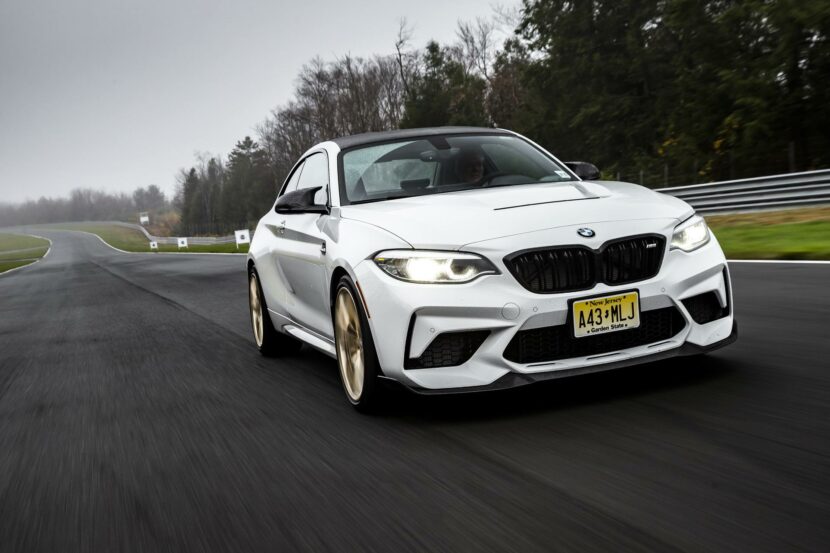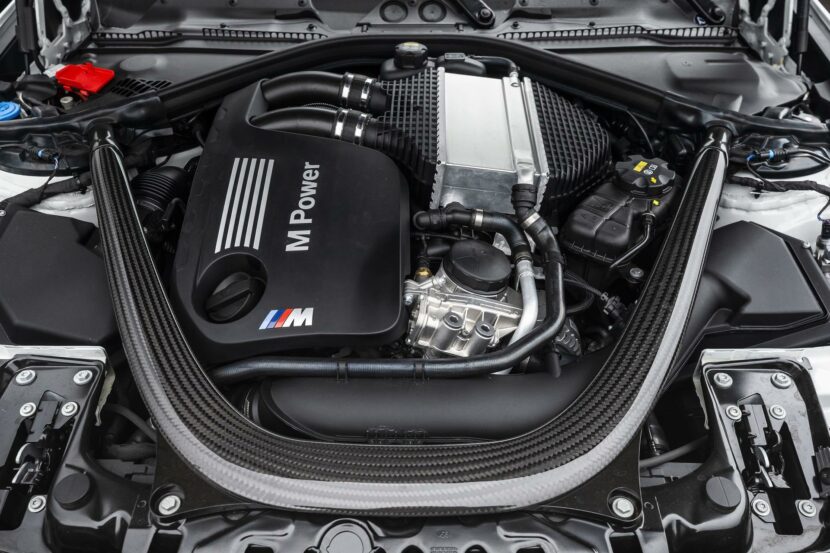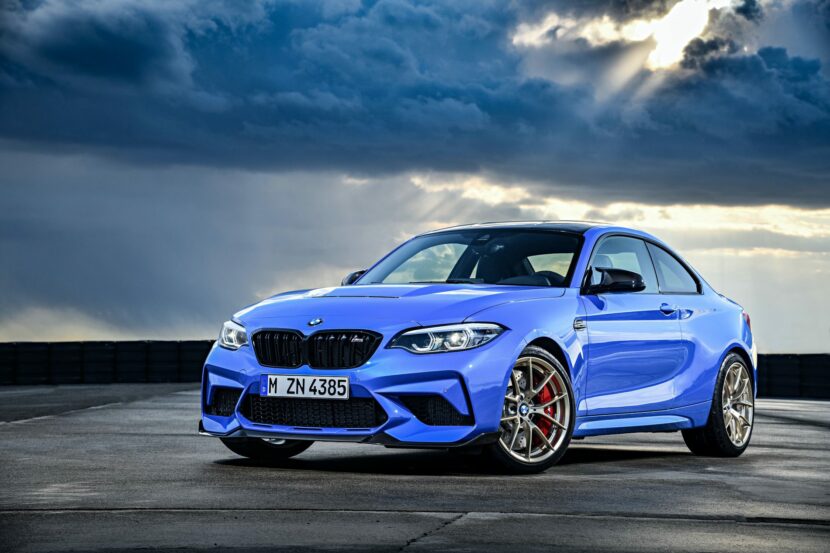BMW officially released details surrounding the 2026 BMW M2 CS, possibly the worst-kept BMW secret in decades. The second-gen M2 CS gets a lot of the ethos and aesthetic that made the first one such a hit. However, there are plenty of differences between the first generation F87 and second-generation G87 M2 CS. In fact, the cars are so different that you might have an easier time than you thought choosing between the two, if you’re lucky enough to be in that situation. And lucky for you, we’re here to help.
F87 vs. G87 M2 CS: Weight and Performance Figures
Let’s cover one of our favorite subjects first: weight. Both the F87 M2 CS and G87 M2 CS ostensibly cut poundage from the more mainstream M2 models. Although BMW never quoted a formal weight loss number for the F87 M2 CS, a theoretical loss of around 55 pounds (25 kg) was possible if optioned with carbon ceramic brakes. While BMW saved weight by introducing a super-sleek carbon fiber roof and center console, kit like additional spoilers and an adaptive suspension apparently made up the difference. BMW officially says the F87 M2 CS weighs 3,417 pounds (1,551 kg). BMW quoted that zero to 60 mph (96 km/h) occurred in 3.8 seconds, and top speed was limited to 174 mph (280 km/h).
Check out the new kid: BMW says the G87 M2 CS weighs in at 3,770 pounds, or 1,710 kg. That means the new model is lugging around 350 pounds more than the old one was. But, perhaps more importantly, the G87 M2 CS does trim up compared to contemporary, more pedestrian M2 models. BMW USA claims a weight reduction of “nearly 100 pounds” (45 kg), although due to differences in standard equipment, it only equates to around 30 kg (66 pounds) of weight savings in EU models. Carbon ceramics could shave another few pounds here too, as they aren’t standard. The harsh (but predictable) reality? The G87 M2 CS is heavier than the F87 M2 CS. BMW says the G87 M2 CS achieves the 0-60 mph dash in 3.7 seconds and will hit a top speed of 188 mph (302 km/h). Both figures are slightly ahead of the last M2 CS and regular G87 M2s.
Engine and Transmission
The F87 M2 CS relies on the S55 engine, a twin-turbo inline-six. So does the G87 M2 CS; but there’s a substantial power gap. The S55 in the F87 makes 444 horsepower and 406 pound-feet of torque (331 kW/550 Nm), whereas the S58 motivating the G87 makes 523 horsepower (390 kW) and 479 pound-feet of torque (650 Nm). Math is tough, so I’ll handle it: that’s an increase of 79 horsepower (59 kW) and 73 pound-feet (99 Nm). That’s a pretty substantial increase; but it may not be enough for spec sheet racers. The G87 M2 CS has a slightly lower power to weight ratio than the F87 M2 CS.
The original M2 CS shipped with your choice of a six-speed manual transmission or seven-speed dual clutch automatic transmission. For the G87 M2 CS, BMW has instead opted for an eight-speed automatic transmission. You still get paddle shifters, at least, and there’s no reason to suspect the 8HP auto won’t be wonderfully competent at swapping gears. After all, it is in every other application BMW uses it in.
F87 vs. G87 M2 CS: Design
The F87 M2 CS featured several unique touches inside and out that separated it from, well, every BMW ever made. It’s the only F87 that got a carbon fiber roof, and here, BMW integrated a unique checkered flag design into the weave. A vented, CFRP hood mirrored what we saw on the F80 M3 and M4 CS cars. Carbon fiber wings and spoilers were all over, and the F87 got special split-five-spoke alloy wheels, too. Inside, a special carbon fiber molded center console without an armrest and generous Alcantara gave you all the motorsport theater you could ever want.
The G87 M2 CS, on the other hand, does not tout an aggressive vented hood. It does not have a cool flag-weave carbon fiber roof (although it does have a carbon roof). It gets unique wheels and an exclusive ducktail trunk lid made of CFRP, though. And inside, the M2 CS touts carbon fiber bucket seats, cool CS text on the door cards, and a similar carbon center console sans armrest. A unique grille design further separates the CS from other M2s, but under the hood, you won’t find the same fancy carbon fiber strut brace that the S55-powered car enjoys. Unfortunately, the 2026 BMW M2 CS also touts the same iDrive screen you find everywhere else in the lineup; the 2020 model touted model-specific analog(ish) gauges that really added to the sense of occasion.
Pricing
The first M2 CS started at $84,595 in the US, and around €96,500. Today, expect to pay around the same on the secondhand market: prices simply haven’t moved much, especially on low-mile and doubly especially for cars with a manual transmission. The lowest-priced F87 M2 CS in the US is currently at $73,000, an automatic-equipped car with 30,000 miles. The highest is a 1,200-mile example listed at $125,730. For reference, the car’s original MSRP was around $25,000 more than the standard M2 of the day.
The G87 M2 CS is priced from $99,775 in the US, commanding €115,000 elsewhere. That’s €37,500 more than a standard automatic-equipped M2, and $31,000 more than that same car in the US. We are sure of a few things: people will pay over MSRP for the M2 CS, and the used market will likely hold very close to original sale prices for a good while.
Which M2 CS to Choose?
It’s a little surprising to see how much the M2 CS has changed. Just six model years and a single generation separate the two, but they’re very different animals. I think the G87 M2 CS will be faster in many situations than the F87; however, I think the better power/weight ratio and lower overall curb weight will keep the F87 M2 CS slightly quicker on tighter tracks. On the street, the G87 M2 CS will ask less of its driver. Similarly, driving at anything less than eight- or nine-tenths, I suspect the G87 M2 CS will feel quicker.
I’ll conclude this comparison with some personal notes. I owned an M2 Competition for a couple years and have some experience on the track and plenty on the street with the N55-powered M2 that came before it. The joy of the M2, for me, has always been what BMW as a brand ensnared me with in the first place: tossable, shift-it-yourself fun in a car that always feels like a special occasion. A lot of that is purely subjective — arguably, it should be — and yet I imagine you can already tell which car I’d choose. I encourage you to drive both. Pick the one that reminds you most of what driving the Ultimate Driving Machine is all about.








